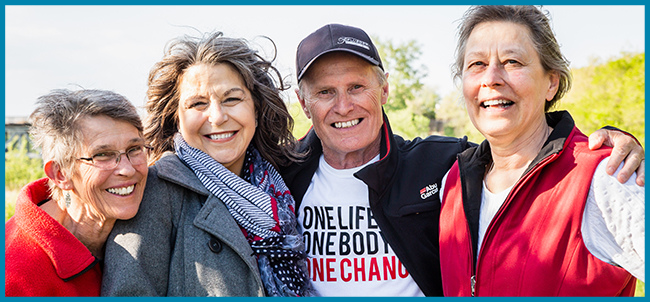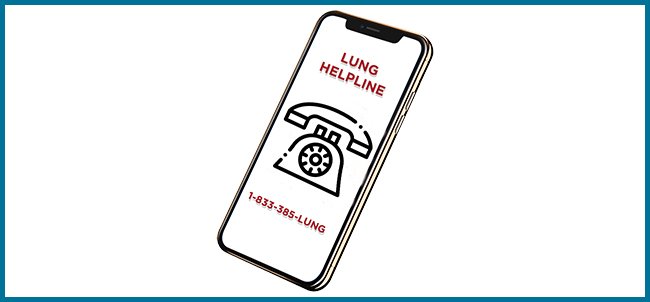Asthma in Children
Asthma is a chronic (life time) disease that makes your lungs very sensitive and hard to breathe. Asthma can't be cured, but with proper treatment, people with asthma can lead normal, active lives. Learn more about asthma.
When can you be diagnosed with asthma?
People can be diagnosed with asthma at any age, however many people are diagnosed during childhood. Most children with asthma have an onset of symptoms in preschool. Twice as many boys under the age of 12 are diagnosed with asthma. However, in adolescence more females are diagnosed with asthma.
Why is it important to diagnose asthma early?
Almost all asthma can be controlled. It is important for children to be properly diagnosed and treated as early as possible because children with asthma that is not controlled or treated properly leads to more unscheduled doctors’ visits, hospitalizations, days missed from school, limitations of daily activities and a reduced quality of life. Because children have smaller airways, uncontrolled asthma can lead to a severe flare-up quickly which requires emergency care and can even be life threatening.
How is asthma diagnosed in childhood?
To help confirm an asthma diagnosis, typically people over the age of 6 years old are given a breathing test called spirometry. However, asthma can be diagnosed earlier with a medical history, physical exam, and response to asthma medications. Asthma symptoms and things that make asthma worse (triggers) can also change with age. Learn more about diagnosis.
How is asthma treated in children?
Like adults, it is important for a child to avoid things that make their asthma worse (triggers) and take their medications as prescribed. There are many medications that can help keep asthma well-controlled. There are two types of asthma medications - controllers and relievers. Children can take many of the same asthma medications as adults. The dosages or amount of medication that is given to them is usually less. As a child gets older they may change their medications as some medications are only recommended over a certain age. It also not uncommon for asthma to change throughout a person’s life requiring different treatment. Learn more about medications.
How do you use an inhaler properly?
Many children do not know how to take their asthma inhalers properly. It is important for children to know how to take their inhalers properly in order to best control asthma. There are different types of inhalers. A child may have more than one type of device for their treatment. It is recommended that children using a metered-dose inhaler or MDI (often described as a puffer) also use a spacer (a tube-like device that attaches to the metered dose inhaler). A spacer helps all the medication be delivered deep inside the lungs rather than hitting the back of the throat. Younger children may also need a small mask which attaches to the spacer and metered-dose inhaler. To learn how to use your inhaler properly, view the inhaler videos.
Do children with asthma have allergies?
Children can have allergies or asthma. Many children have both. This is known as allergic or eosinophilic asthma. Learn more about allergies and asthma.
Can children with asthma exercise and play sports?
Yes. Children with asthma should be able to lead active lives. However, it is important that a child’s asthma is well controlled first. Exercise is a common trigger for asthma, but with well controlled asthma, being active should be possible. Many professional athletes and Olympians have asthma. Learn more about healthy living with asthma.
Why do many children with asthma have a flare-up in September three weeks after they go back to school?
A sharp rise in asthma symptoms that occurs soon after school begins is known as the “September Spike.” When youth go back to school, they are suddenly in close quarters with many others and with the germs and viruses, children carry. Viruses, including the common cold, are one of the main triggers (things that make asthma symptoms worse) for asthma symptoms in children. COVID-19 is also a concern. For those with asthma, especially uncontrolled asthma, viruses can lead to dangerous symptoms and unscheduled visits to the doctor or the emergency department.
Other triggers can also set off asthma in September. It is the peak season for ragweed, some pollens, dust, and moulds. It is also a time of higher stress. These are all common triggers for people with asthma.
School-age children are not the only ones affected by the September Spike. Children with colds often pass their germs on to other family members. Adults with asthma also have a spike in symptoms each September. Learn more about how to prevent back to school flare-ups.
More Resources for Children with Asthma
We have a number of asthma and children resources to help children and parents learn more about asthma and how best to manage it.
Asthma Active - A resource to help children with asthma be active.
Asthma in Children – An asthma guide written by a Canadian children’s lung specialist.
Brave Boy – A story book that teaches a young boy to not fear his asthma.
Pediatric Asthma Action Plan - A plan that outlines steps for you to self-manage asthma. This plan should be filled out with your health care provider.
Children’s Hospital of Eastern Ontario (CHEO) Asthma Resources
Lung Health Foundation’s Quick Reference Guide to Understanding your Child’s Asthma Care





